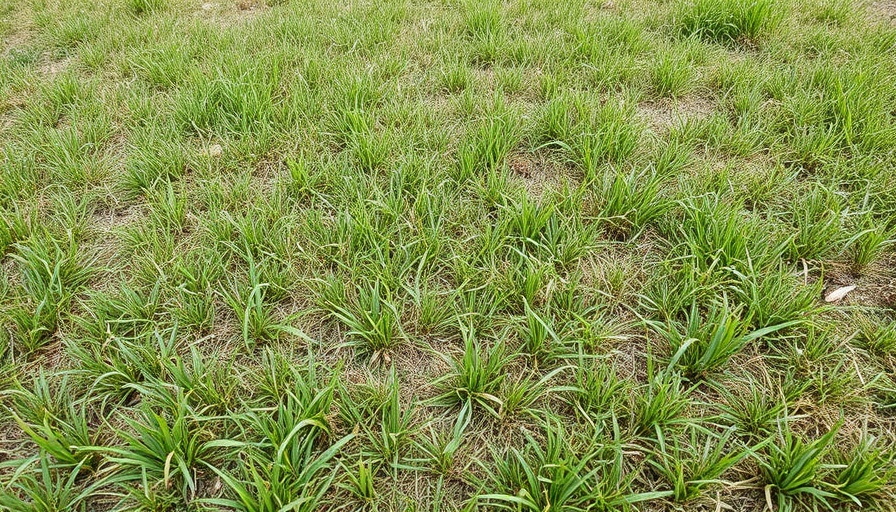
Understanding Leaf Spot: A Critical Threat to Your Lawn
Leaf spot is more than just an unsightly blemish on your lawn; it’s a fungal disease that can lead to significant damage if left unchecked. Mainly caused by the Bipolaris spp. and Drechslera spp. fungi, leaf spot is notorious in Northeast U.S. lawns, thriving in damp conditions that are often exacerbated by improper lawn care practices.
Identifying Leaf Spot in Your Yard
The first step in addressing leaf spot is to identify its symptoms accurately. Homeowners should keep an eye out for browning or yellowing patches that seem to spread unsystematically across the lawn. Additionally, look for black or purple lesions and irregularly shaped spots on grass blades. These symptoms often emerge during the spring and summer months, making lawn vigilance critical.
Causes of Leaf Spot: The Role of Lawn Care
Understanding what leads to the onset of leaf spot can be a game-changer in maintaining a vibrant lawn. The following factors contribute significantly to the disease's prevalence:
- Excess Moisture: Overwatering, combined with high humidity and poor drainage, creates an ideal environment for the fungus.
- Improper Mowing Practices: Mowing too short (lawn scalping) can stress the grass, increasing susceptibility.
- Thatch Buildup: Excess thatch can prevent essential nutrients from reaching grass roots.
- Nutrient Imbalance: Both too much nitrogen and deficiencies in potassium can promote leaf spot.
- Poor Air Circulation: Compacted soil often leads to stale air, allowing moisture to linger.
- Shade and Drought Stress: Lawns under heavy shade retain moisture longer and stressed lawns are more prone to disease.
- Favorable Temperatures: Leaf spot thrives in temperatures between 60 and 90 degrees Fahrenheit.
Preventing Leaf Spot: Proactive Lawn Care Strategies
A healthy lawn is a resilient lawn. Therefore, homeowners should focus on proactive lawn care strategies to mitigate the risk of leaf spot:
- Water Wisely: Water in the early morning to allow for proper drying before temperatures drop at night.
- Mow Properly: Maintain the grass height to at least 3 inches to ensure healthy growth and discourage fungal development.
- Cultivate Good Airflow: Aerate your lawn to improve drainage and air circulation.
- Manage Thatch Levels: Dethatching can ensure that nutrients penetrate the root zone.
- Monitor Soil Nutrients: Conduct regular soil tests to keep nutrient levels balanced.
Treatment Options: Rectifying the Situation
If leaf spot has taken hold in your lawn, treatment options are available to restore its health:
- Fungicides: While fungicides can help tackle leaf spot outbreaks, they are most effective when combined with proper lawn care.
- Lawn Care Services: Engaging professionals can provide targeted treatments tailored to your lawn’s specific challenges. A LawnStarter lawn treatment pro costs on average $106 per visit.
Key Takeaways: Keep Your Lawn Thriving
Preventing and treating leaf spot requires awareness, diligence, and proper lawn care techniques. By ensuring a healthy environment for your grass, you can mitigate the risks associated with this common lawn disease.
A vibrant lawn isn’t just aesthetically pleasing; it’s a reflection of healthy upkeep and care. Investing time in your lawn care strategy today will only pay off in lush, green grass tomorrow.
 Add Row
Add Row  Add
Add 


Write A Comment